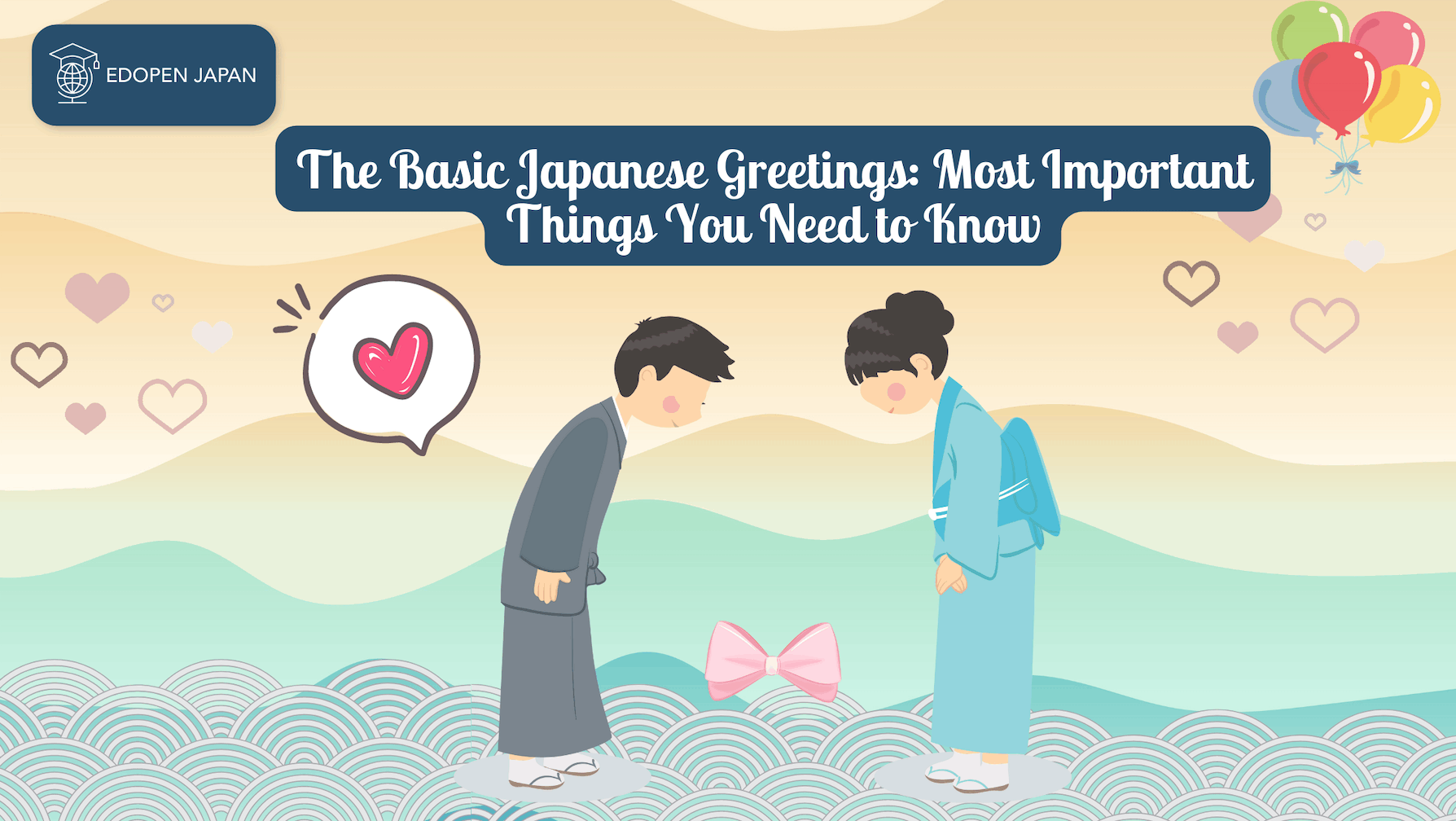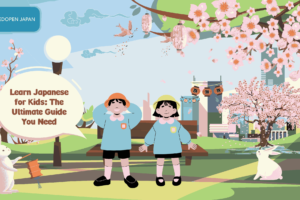Greetings are important in many cultures and languages, and Japan is no different. There are many Japanese greetings, each with its own unique rules of usage. It’s important to master Japanese greetings if you plan to live and study in Japan.
Whether you are living in Japan or just visiting for a short time, Japanese greetings will be part of your daily experience. You will hear and eventually use these Japanese greetings, called aisatsu (あいさつ), routinely. Because of the importance of greetings in Japanese culture, this should be one of the first things you learn when learning Japanese.
If you want to learn other phrases that are often used when greeting people in Japanese or are closely related to the topic of greeting people in Japanese, check out our recommendations below!
Read also:
How to Use “Yoroshiku Onegaishimasu”?
How are You in Japanese: All You Need to Know
All You Need to Know about “Good Bye or Sayonara (さよなら)”
And, the following are the basic Japanese greetings you’ll want to learn to feel a little more immersed in the culture. Let’s have a look below!
Contents
Japanese Greetings in Cultural Aspect
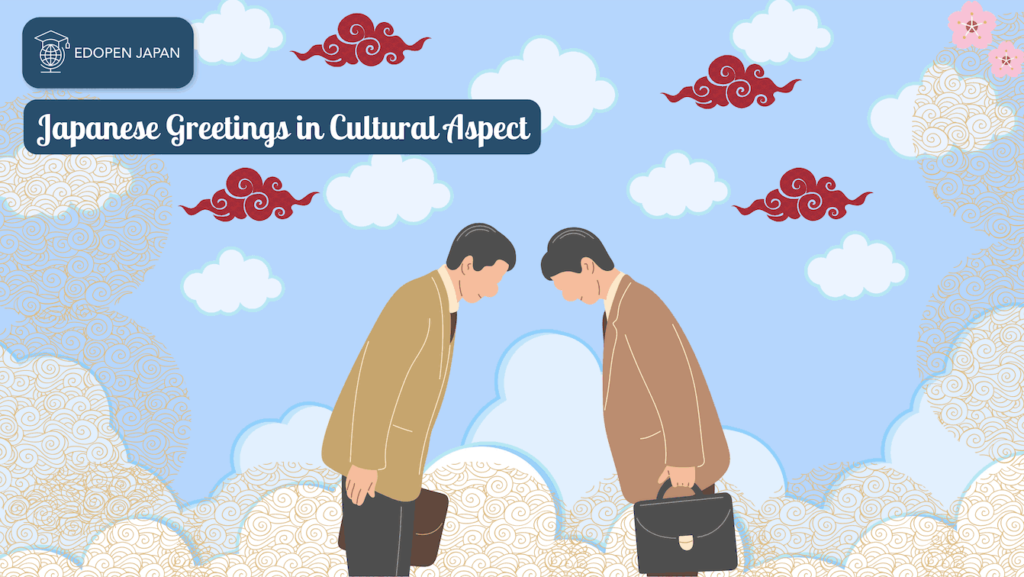
The word “Aisatsu (あいさつ)“, which means “greeting” in Japanese, is more than just “hello”. In some cases, it’s not just what you say, but how you say it. This means that body language will also play a role in how you use Japanese greetings throughout the day, depending on the situation and who you are talking to.
“Aisatsu” is very important and is taught from early childhood. For example, it is not uncommon for students to greet every passing student of a higher grade as a sign of respect.
Also important in the workplace, Japanese greetings can create a positive work environment and great relationships. It is also interesting to note that handshaking is not as common and bowing is much more common as a custom.
Japanese culture reflects that the locals do the “Ojigi (お辞儀) or bow” because it shows respect and willingness to lower oneself in a vulnerable position in front of the other person.
It is said that the “bow” was transmitted from China to Japan around 500 to 800 as Buddhism spread. Originally, it was said that by bowing and showing one’s head to one’s opponent, one showed that one had no intention of attacking or being hostile.
Please note that you are expected to do this even if you are a foreigner just visiting the country. There are three types of bows that you can make while saying your Japanese greetings. Please read more about these 3 types of bows as the following.
1. Eshaku (会釈)
Eshaku (会釈) is the 15 degree bow used for informal interactions with strangers or close friends. A general bow in which the body is slightly tilted at an angle of 15 degrees during the bow (a bow performed while standing). It is used for greetings between relatively close relationships, such as co-workers and relatives.
2. Keirei (敬礼)
30 degree bow is mainly used in business situations and when meeting people for the first time. This is also perfect for saying hello to your boss or greeting customers.
“Keirei” is more formal than “Eshaku” and is used to express deep gratitude and welcome to customers and people one meets for the first time.
3. Saikeirei (最敬礼)
45-degree type of bow used to apologize or show guilt. It can also be used to greet high-ranking government officials. It is used for executives, important customers, and respected people. In Japan, people greet each other by bowing.
The Meaning of Greetings for Native Japanese
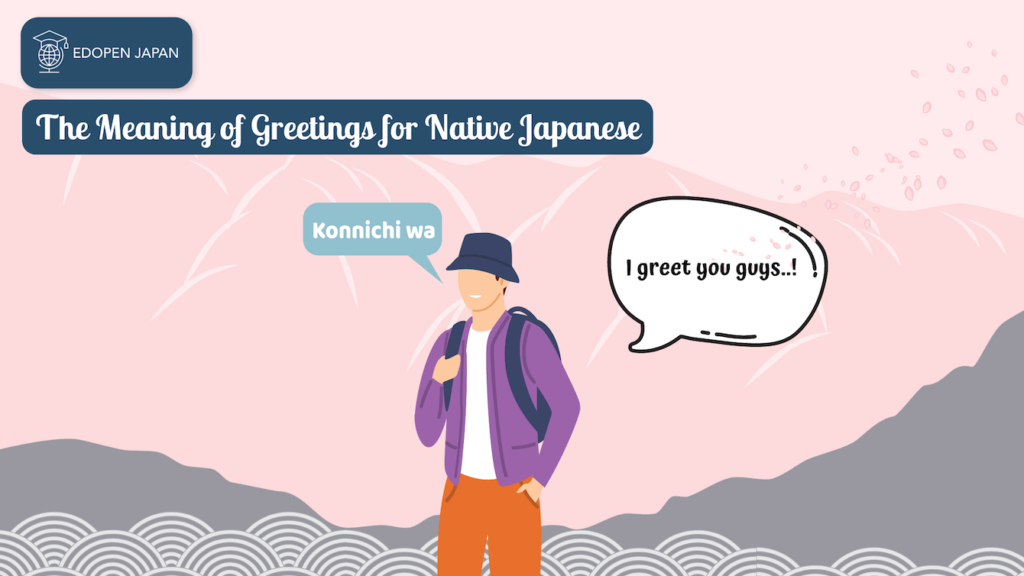
In general, when you hear “A scene of exchanging greetings,” you probably imagine the time of meeting and parting. People greet each other when they come to work or go home in the morning at work, when they wake up or go out in the morning at home, or when they meet and talk with their neighbors and say goodbye. This is not limited to Japan, but is almost the same all over the world.
However, compared to other countries, greetings for Japanese people tend to be more “polite,” a Japanese who values politeness and feelings of gratitude. A typical greeting is “bowing”.
(1) Japanese greetings used throughout the day
The basic form of greeting
| English | Japanese | Meaning |
| Ohayō gozaimasu | (おはようございます) | Good morning |
| Konnichi wa | (こんにちは) | Good afternoon |
| Konban wa | (こんばんは) | Good evening |
| Sayōnara | (さようなら) | Goodbye / See you |
| Arigatō gozaimasu | (ありがとうございます) | Thank you |
| Hajimemashite | (はじめまして) | Nice to meet you |
| O genki desu ka? | (お元気ですか) | How are you? |
(2) Japanese greetings at home
If you are planning to participate in a homestay program where you will share a home with a Japanese family, it would be wise to learn all the typical phrases and greetings you might hear from the locals. Whether at work or at home, Japanese culture places a high value on respect and etiquette, which is why you should at least be familiar with the following.
If you are ever invited to a Japanese home, please remember that you should start by greeting the family with the basic greeting of “こんにちは(Konnichiwa)” accompanied by a 30-degree bow, especially if you are talking to the elderly.
After saying this, you must also say “おじゃまします (Ojamashimasu),” which is a formal greeting that means “Sorry to disturb you. Also, greet the host directly and give him or her “手みやげ (Temiyage)” or a small gift, which is important in their culture as it shows your gratitude for being invited.
Any gift will do, but the most common form is food, tea, or anything that can be consumed.
| English | Japanese | Meaning | When to use |
| Ittekimasu | (いってきます) | I’ll go now and will be back | When leaving the house |
| Itterasshai | (いってらっしゃい) | Please go and come back/ or Take care | Response when someone leaves the house |
| Tadaima | (ただいま) | I am back | When you are home from work |
| Okaerinasai | (おかえりなさい) | Welcome back | Response when someone is back home |
| Itadakimasu | (いただきます) | I will eat now / Let’s eat | To say that you are thankful for the food |
| Gochisōsama deshita | (ごちそうさまでした) | Thank you for meal/ I enjoyed the meal | After finishing a meal |
| Oyasuminasai | (おやすみなさい) | Good night | When you go to bed |
(3) Formal Japanese greetings for the workplace
As you have probably noticed from the above section, Japanese people like to exchange gifts. Therefore, if you are moving to Japan to take up a new position in a company or government office, it would be wise to bring “おみやげ (Omiyage)” from your home country.
“Omiyage” is basically a souvenir. “Omiyage are also usually edible gifts that are individually wrapped and given face to face.
In terms of work culture, the Japanese are known around the world as some of the hardest working people in the office. Therefore, there are times when they sometimes have to work overtime, and if you are planning to go home before they do, make sure you know the greetings and polite Japanese phrases you can use.
The proper Japanese greetings to use in the workplace
| English | Japanese | Meaning | When to use |
| Yoroshiku onegai shimasu | よろしくおねがいします | Nice to meet you | Meeting someone for the first time |
| Osaki ni shitsurei shimasu | おさきにしつれいします | I’m going home | When you are leaving ahead of your coworkers |
| Otsukaresama desu / deshita | おつかれさまです・おつかれさまでした | Good job/ See you | This is a compliment that means someone appreciates hard work. |
| Osewa ni narimasu | おせわになります | Thank you very much everytime | Thanking colleagues for their help and kindness |
Otsukaresama desu is such a useful Japanese greeting in a professional environment, such as the office. You can use this with anyone you work with, colleagues, bosses or managers. When you want to say “good job,” “hello,” and “see you later.
The Advanced Greetings
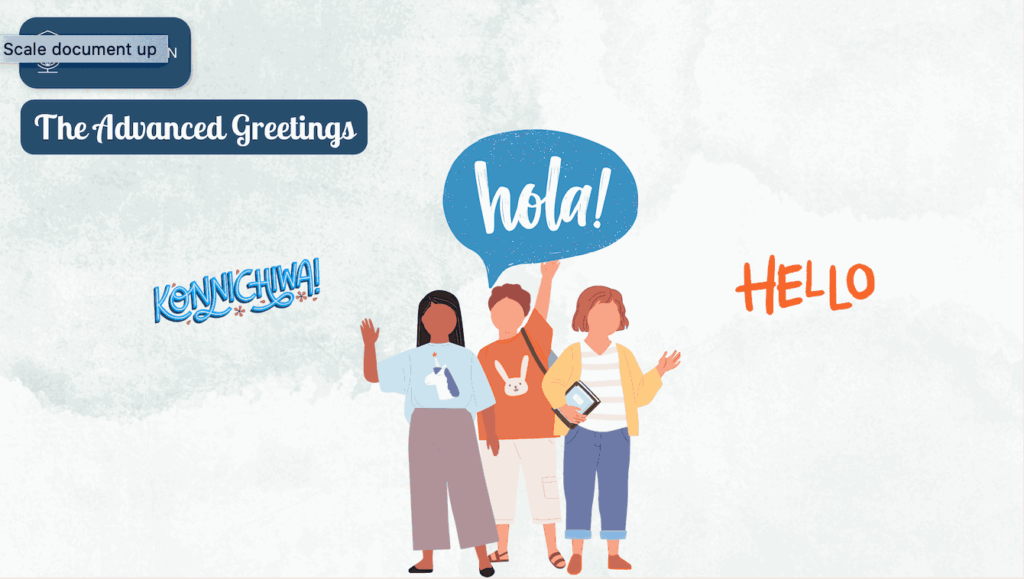
The Informal Greetings
(1) ヤッホー (Ya-ho-) “Yoohoo”
This is a very casual greeting, usually between young children or close friends. It’s a more feminine greeting. “ヤッホー” is another exclamation type of greeting used to get the attention of a close friend or child. It’s like shouting “Yoohoo!” and waving for attention. You would follow it with your friend’s name.
For example:
ヤッホー いま何してる?
Ya-ho~! Ima nanishiteru?
Hi what are you doing now?
(2) おす! (Osu!) “Hey”
“おす” is a masculine, slang way of greeting other guys. Girls don’t usually say it. I sometimes use it with friends – and often get strange looks). And guys wouldn’t say it to girls. It can also be used as “Yes, sir!” or a “Roger!” Some anime use it, but it’s not common in everyday speech.
(3) よー!(Yo-!) “Yo!” Hi!
Same as English. You can informally greet a close friend with a simple “Yo!” You wouldn’t say that to someone older than you. It’s also more masculine, but sometimes young girls and women say it to get someone’s attention.
For example:
よー!元気にしてる?
Hi! How are you?
(4) 元気~?(Genki~?) What’s up?
Yes, this is the English “hello” You can actually use it as a Japanese greeting, although it’s super casual. Children use it more than adults.
(5) おつかれ (Otsukare~‼)/ おっつ~ (Ottsu~‼) Good work or Hi!
This is a casual “Otsukaresama-deshita”. It means hi / see you / good work. We can use it when we meet at work and say hi or goodbye between co-workers or friends.
For example:
A: お疲れ〜! (Otsukare~)
B: お疲れ〜! (Otsukare~) 仕事はどう? (Shigoto wa dou?) How is your work?
(6) 最近どう?(Saikindou?) What’s new?
This is just one of many ways to say “what’s up” or “what’s new”.
(7) 久しぶり (Hisashiburi) How have you been?
This does NOT literally mean hello in Japanese. But it’s definitely used as a Japanese greeting instead of hello. And it’s used when you haven’t seen someone in a while.
For example:
A: ひさしぶり~! Hisashiburi~!
B: ひさしぶり~! Hisashiburi~! 最近どう? Saikin dou? What’s up?
(8) どうも (Doumo) Hi!
“Doumo” can mean many things, depending on the context. In the case of greetings, it’s a super casual way to say hello. You should only use it with friends.
For example:
A: どうも! (Doumo!)
B: この前はありがとう! Kono mae wa arigatou! Thanks for the other day!
The Basic Phrases for Saying Goodbye
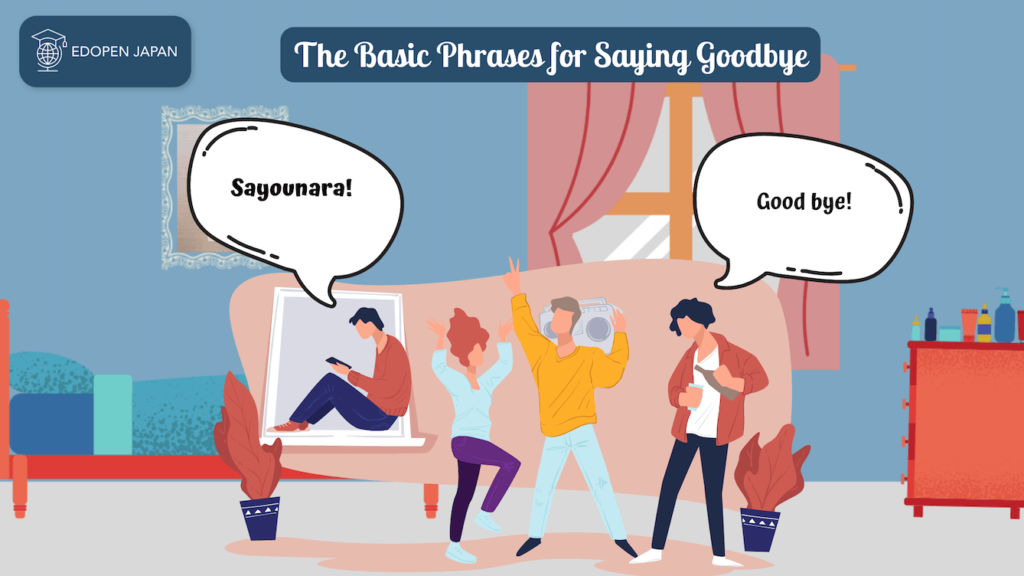
If you have watched a lot of anime and Japanese movies, you know that the most common poetic form of saying goodbye is “さようなら[Sayonara].
While the media uses it extensively, it is not the best way to say goodbye like a native speaker. In fact, using the wrong tone can actually cause awkwardness, as most Japanese believe that this is like saying goodbye forever. To learn the more acceptable versions of this greeting, check out our translations below.
| English | Japanese | Meaning |
| Sayounara | さようなら | See you |
| Otsukaresamadesu | おつかれさまです | Good job / See you |
| Mata ne or Jyaane | またね/じゃあね | See you later |
| Mata ashita | また明日 | See you tomorrow |
| Mata raishu | また来週 | See you next week |
| Baibai | バイバイ | Bye-bye |
The Best Japanese Greeting Tips You Need to Know
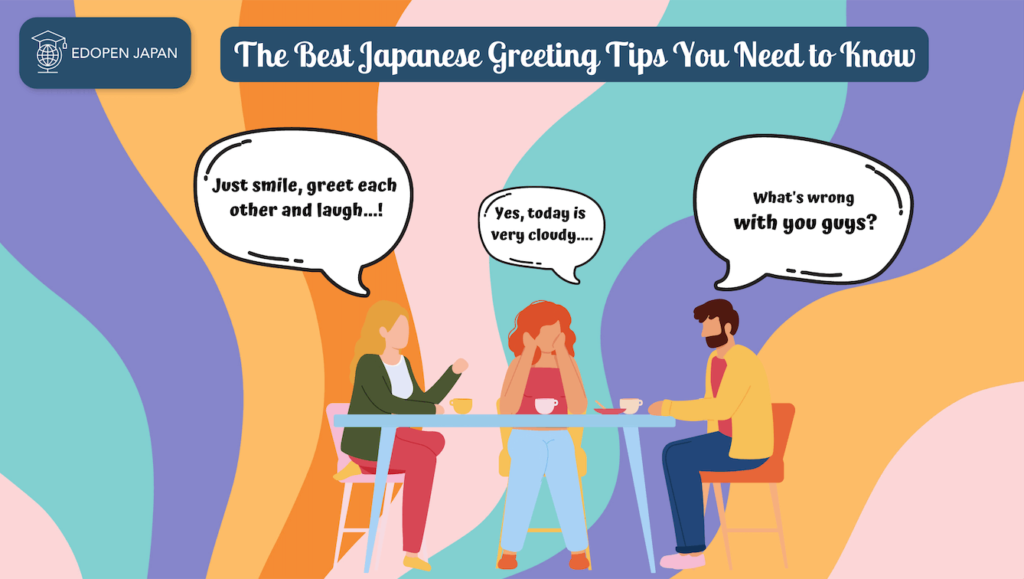
(1) Greetings peculiar to Japan that surprise people overseas
Greetings such as “Good morning” and “Thank you” are used in the languages of each overseas country, but the words “Itadakimasu [いただきます]” and “Gochisousama-deshita [ごちそうさまでした]” used before and after meals are unique to Japan. “Itadakimasu” expresses gratitude for “getting a life,” and “Gochisousama-deshita” expresses gratitude for running around to prepare meals.
Many overseas countries do not have a set greeting to use before and after such a meal, and many people find it strange or surprising to hear “Itadakimasu” or “Gochisousama-deshita” in Japan.
| English | Informal | Formal Polite | Formal Respectful |
| Good morning | おはよう [o ha yo u] | おはようございます [o ha yo u go za i ma su] | おはようございます [o ha yo u go za i ma su] |
| Good evening | こんばんわ [ko n ba n wa] | こんばんわ [ko n ba n wa] | こんばんわ [ko n ba n wa] |
| Hello | 元気? [ge n ki?] | こんにちは [ko nn ni chi wa] | こんにちは [ko nn ni chi wa] |
| Good night | おやすみ [o ya su mi] | おやすみなさい [o ya su mi na sa i] | おやすみなさい [o ya su mi na sa i] |
| How Are You? | 元気? [ge nn ki?] | お元気ですか? [o ge nn ki de su ka] | いかがお過ごしですか? [i ka ga o su go shi de su ka] |
| Long Time No See | 久しぶり [hi sa shi bu ri] | お久しぶりです [o hi sa shi bu ri de su] | ご無沙汰しております [go bu sa ta shi te o ri ma su] |
| Bye (version 1) | またね [ma ta ne] | では、また [de wa, ma ta] | 失礼いたします [shi tsu re i i ta shi ma su] |
| Bye (version 2) | バイバイ [ba i ba i] | さようなら [sa yo o na ra] | お疲れ様です [o tsu ka re sa ma de su] |
| Bye (version 3) | じゃあね [ja a ne] | – | – |
| Welcome | ようこそ [yo o ko so] | いらっしゃいませ [i ra ssha i ma se] | – |
| Hey! (typically used between male friends) | おす [o su] | – | – |
(2) The greetings used when you meet someone for the first time
1. “初めまして” [Hajimemashite]
When you meet someone for the first time, you can use this.
This means the same as “Nice to meet you.
2. “私の名前は○○です” [Watashi no namae ha ○○ desu]
You can tell your name by using this phrase.
3. “○○から来ました” [○○ kara kimashita]
Put your country in front of ~kara, you can say your country.
4. “どうぞよろしくお願いします” [Douzo yoroshiku onegai simasu]
At the end of the greeting, say this phrase. It means “Nice to meet you.
You can also use this to ask for something.
(3) The appreciation in Japanese greeting
- “ありがとうございます” [Arigatou gozaimasu]: This is a polite way of saying “thank you.
- “ありがとう” [Arigatou]: This expression is a friendly way of speaking better than before. You can use this phrase when we thank a person, we usually bow.
- “どういたしまして” [dou itashimashite]
- “いえ” [ie] /“いえいえ” [ie ie]
After being acknowledged by someone, use these expressions. These mean the same as “Your welcome.
(4) The apology in Japanese greeting
- “ごめんなさい” [Gomen nasai] or “ごめん” [Gomen]: Use these phrases in everyday life. Do not use them in business situations.
- “すみません” [suimasen]: This is a polite expression and has different meanings. First, you may use this phrase when you apologize to someone. Second, when you talk to someone. When you thank someone, you can use this. “Sumimasen” are really useful words.
- “申しわけございません” [Moushiwake gozaimasen] or “申しわけありません” [Moushiwake arimasen]: These expressions are more polite than others and are often used in business situations. Japanese people bow deeply when apologizing.
How was it? Some sentences are a little longer, but keep trying! Now that you know how to say “hello” in Japanese and some other useful greetings, you’re ready to put them to use! Greetings are an invaluable and necessary part of the Japanese language that will allow you to make new friends and explore new places.
The Conclusion
- There are many phrases in the Japanese greeting “Aisatsu”, and it is important for Japans to value politeness and feelings of gratitude. A typical greeting is “bowing”.
- Compared to other countries, Japanese greetings tend to be more “polite”.
- There are some unique phrases like “Ittekimasu”, “Itterasshai” and “Itadakimasu” “Gochisousama”, for everyday use at home that other countries do not have.
- In the workplace, “Otsukaresamadesu” means not only “Good work,” but also other meanings such as “Hello” and “See you.
- If you want to use Imformal greetings, it is better to be careful to use only for friends, and if you want to use phrases like “Osu!” and “Yo!” are usually for man, so keep that in mind.
